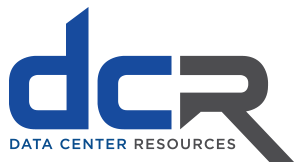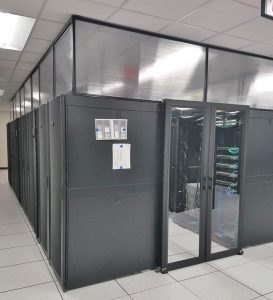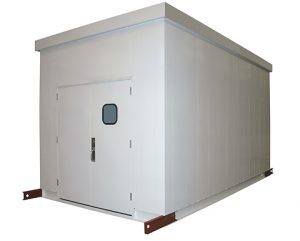Global electricity grids have been transforming in recent years. Large, reliable, centralized thermal power plants are increasingly being replaced by other energy sources like wind and rooftop solar. Factors like rising energy demand, extreme weather events, and electric transportation (electric cars and public transit) further increase the risk of instabilities and blackouts.
The rise of distributed energy resources (DERs) reduces the level of control that network operators have, and their status remains inconsistent, especially at the residential level. For instance, not all utility companies require customers to register their home solar systems.
In a typical distribution grid control room, millions of points on the network are monitored in real-time. As more distributed energy resources are added, the need to manage additional points becomes increasingly important.
Adapting to the Growing Complexity
New technologies and systems provide operators with precise, real-time status updates of the energy grid and better situational intelligence for anticipating conditions and making quick mitigation decisions and actions. Despite these advancements, maintaining grid stability remains a challenge due to the rapid pace of change and the increasing complexity of the system.
Innovative technologies are emerging to support additional control room functionality. Distributed Energy Resource Management (DERM) systems, for example, enable network operators to effectively aggregate distributed resources and provide both grid edge intelligence and functionality. Advanced Distribution Management Systems (ADMS) and Wide Area Management Systems and Control (WAMS and WAMC) are also essential tools for proactive grid stability management.
The network control data center requires more advanced tools to support system management and ensure a balance between supply and demand. With millions of potential data points, operators rely on vast volumes of data to make informed decisions. Gathering and analyzing this data to find actionable insights is increasingly becoming a data management challenge. Preparing and supporting operators to get the most out of these new tools is vital to maintaining network stability.
Integrating New Tools and Techniques
While the network’s complexity has grown, the capabilities of related control systems have also dramatically increased. In addition to supporting frameworks like ADMS, WAMS, and DERMS, new fields such as machine learning offer a range of better grid-management tools. Artificial intelligence, for example, excels at sifting through large volumes of data to draw actionable conclusions. Integrating these intelligence-led, decision-making tools into control room systems is crucial for ensuring reliability. However, operators must be prepared to use them proactively without becoming overwhelmed by data. During significant events, operators could receive hundreds or even thousands of notifications in a short time period, a phenomenon known as an alarm ‘cascade’ or ‘swarm’. This can make it extremely difficult to determine the root cause of a failure and take appropriate action.
Several techniques support real-time alarm analysis. For example, the Network Event and Alarm Transparency (NEAT) project saw PSC and Harmonic Analytics develop a tool for diagnosing alarms and events. This tool helps Distribution Network Operators (DNOs) manage the increasing number of new and unfamiliar alarms in their control rooms. Developed for the UK’s Western Power Distribution (WPD) network operator, NEAT helped them understand the root causes of alarms and manage them more effectively.
Addressing Future Challenges
Grid stability and control are expected to become more complex over time, as is the scale of the required computer software systems. For instance, scaling the databases needed to model the evolving grid is essential. Operators must keep these systems up-to-date to handle the sheer volume of data. While the grid balancing challenge is scaling up, utilities have a crucial advantage: they typically have already amassed substantial volumes of network data, which is the first step towards better control.
By correctly understanding and using available data to deliver the right insights, the network can be managed more efficiently. This approach can potentially avoid the need to invest billions of dollars in transmission infrastructure to reinforce the grid.
Investing in Training and Smarter Systems
In addition to new and more advanced toolsets, investing in operator training is vital. Dispatcher training simulators are an excellent way to prepare control room operators for real-time scenarios. Ultimately, the control room is the center of the network management system, and operators are the system experts. Given the scale of the challenges, ensuring they are fully prepared and able to maximize the value of available data is crucial.
While a better understanding of the network and appropriate data center tools is important, achieving operational goals requires substantial upfront investment in data science and related control systems. Partnerships that bring data science and analytics expertise can support network operators in finding more effective ways to manage the largest machine in human history. Like any complex system, it takes teams of skilled people to understand all the different aspects of the grid.
In Closing
New technology projects around energy data centers require trust to launch, as outcomes are not predefined. The good news is that these projects can be scaled down to deliver value quickly and prove data science’s effectiveness as a valuable business tool. The energy transition’s pace is immense, and the transmission and distribution sector must be nimble to leverage lessons already learned and move quickly. Grid operators must evolve to meet the challenges of the evolving network landscape. Implementing control room systems to manage this complexity effectively is critical, but learning how to use these systems is imperative.
Would you like more info on server rack infrastructure? Contact Data Center Resources today.
Contact Information:
866.740.2121
info@datacenterresources.com





